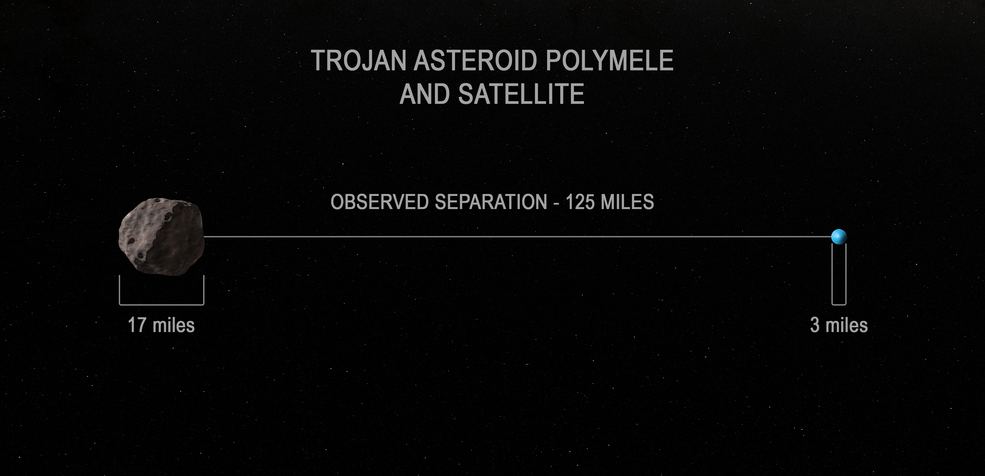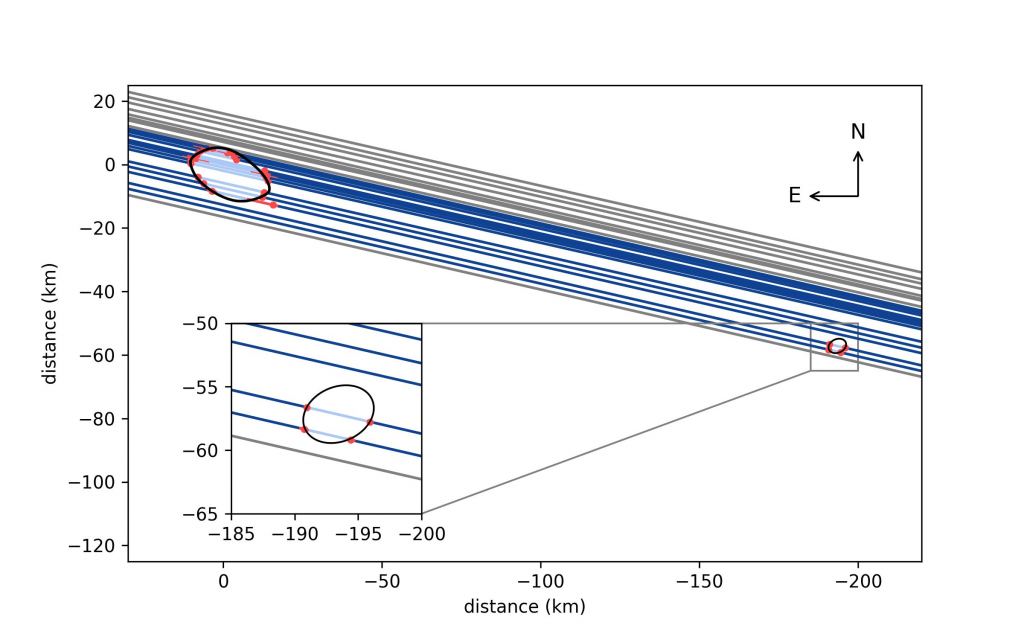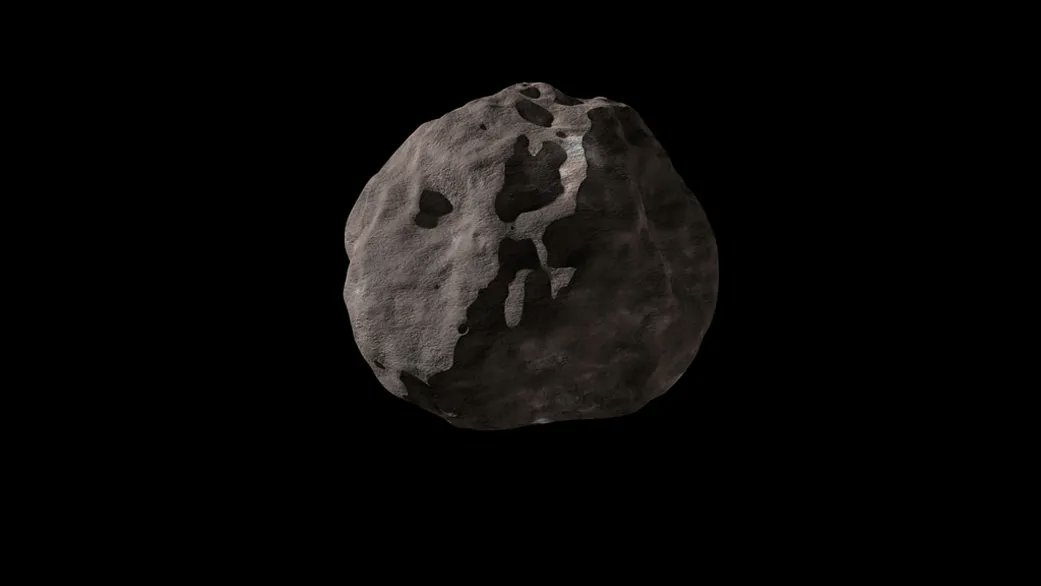There is still so much we don’t know about the asteroids. Various missions have already been sent to some near Earth and in the asteroid belt, but there are just so many that it is hard to keep track of them all. Lucy, NASA’s mission to the Trojan asteroids, is supposed to help with that, but even it doesn’t know what it is getting into. Apparently, there are even more things to explore than the mission designers initially thought when it launched. Rather than visiting seven asteroids as originally envisioned, the discovery of another asteroid in orbit around Polymede means the mission will be visiting nine asteroids in total.
Yes, nine is two more than seven, but that is indeed the number of asteroids the spacecraft will be visiting because there was another companion asteroid paired with another that Lucy is supposed to fly by. Eurybates, another of Lucy’s originally planned stops, also has a companion asteroid, which a team discovered using Hubble in January 2021, about nine months before the mission launched.
Even once Lucy itself launched and suffered from some technical issues that were only recently largely fixed, the team responsible for it was still trying to collect as much data as possible on the mission targets. One of those, Polymede, the smallest of the asteroids Lucy planned to visit, happened to have a fortuitous astronomical event to watch.

Credit – NASA Goddard Space Flight Center
It was occulting a star. And that occultation could lead to plenty of additional data about this object that is so small and distant from Earth. Observing it is equivalent to trying to see a quarter on the streets of Los Angeles from Manhattan.
So the Lucy team asked a collection of 26 groups of professional and amateur astronomers to spread out across the occultation path on March 27 of this year. Only Fourteen of those teams were successfully able to detect the occultation due partly to sky conditions. But two of those observations held a “special surprise,” as a press release called it.
They saw something else pass in front of the star that wasn’t Polymede itself but appeared to be located about 200 km away from it. “It had to be a satellite,” said Marc Buie, head of Lucy’s occultation team at the Southwest Research Institute. The object itself appears to be about 5 km long, not that much smaller than Polymede itself, which is only 27 km long on its longest side.

Credit – NASA Goddard Space Flight Center
Technically there are only two data points proving this satellite currently exists, and the team won’t be able to name it until they can determine its orbital pattern officially. That will likely prove impossible in the near term, as the satellite itself is too tiny, dim, and close to Polymede itself to be distinguishable to near-Earth telescopes. Their only hope lies in another potential occultation (one of which is happening on August 26th), or when Lucy arrives in the system around 2027.
This isn’t even the first time a star occultation has happened. We reported earlier on an occultation of Eurybates, the other of Lucy’s targets with a small satellite, back in October last year. It’s unclear whether that occultation also caught the same satellite Hubble found. The mission might need to change the mission tag line, which originally read “Twelve years, seven asteroids, one spacecraft.” They might not be the only two bonus asteroids found as part of Lucy’s twelve-year mission. There are plenty more changes for occultations, and other observations, before Lucy visits Patroclus, its last asteroid, in 2033.
Learn More:
NASA – NASA’s Lucy Team Discovers Moon Around Asteroid Polymele
UT – Astronomers Lined up Under an Asteroid’s Shadow to Measure its Size Precisely
SWRI – Lucy Occultation Events
UT – Lucy’s Solar Array is Fixed! (Mostly)
Lead Image:
Model of Polymede
Credit – SWRI

